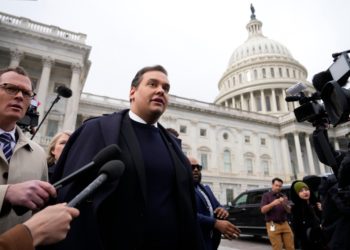Health insurance prices for next year under the Affordable Care Act are now available in about a dozen states, giving Americans their first look at the sharp increases many will pay for coverage if Congress does not extend subsidies that have made some plans more affordable.
The annual enrollment period for Obamacare is expected to begin Nov. 1, but the costs for some Americans are becoming publicly available piecemeal through some state marketplaces. The federal website healthcare.gov, which includes 28 other state marketplaces, is slated to post prices before the end of October.
People shopping for coverage can now preview the costs they face from potentially expiring subsidies and sharply rising premiums in many markets, including California, New York, Nevada, Maryland and Idaho. Some consumers also found out that they would have fewer choices because their insurers dropped out of some markets for 2026.
Based on the newly posted information, a family of four making $130,000 in Maine would face an increase of $16,100 in annual premiums next year because they would no longer qualify for more generous subsidies, said Gideon Lukens, a health policy researcher for the Center on Budget and Policy Priorities, which supports extending the subsidies.
Older people will also see sharp increases, according to his calculations. In Kentucky, a 60-year-old couple making $85,000 per year could face an increase of $23,700 in annual premiums. In Nevada, a similar couple could pay an additional $18,100 in annual premiums, while in Minnesota, the cost might be $15,500 more and, in Maryland, an additional $13,700.
The government shutdown has already amplified the potential for higher health insurance costs for millions of Americans if the subsidies are not continued. Democrats have demanded that Republicans extend the more generous subsidies in any deal to reopen the federal government, which has been closed for 17 days over a spending impasse.
“I am willing to sit down with Democrats to discuss the growing unaffordability and unsustainability of Obamacare,” said Senator John Thune, the majority leader and a Republican of South Dakota, on Friday on X. But, he added, “I will not negotiate under hostage conditions, nor will I pay a ransom. Period.”
Though some states have begun publishing their prices to allow customers to window-shop before the markets officially open next month, prices for the 28 state exchanges run by the federal government have not yet been made public. Healthcare.gov typically gives customers an early look at prices before enrollment formally begins, but the site has not yet published information about next year’s plans.
Overall, filings from insurance companies show that prices for plans are rising by an average of 18 percent nationwide next year. But most Americans who buy their own health insurance qualify for federal tax credits that help them pay their premiums. Those subsidies were made more generous during the pandemic, but they are set to return to the earlier, lower levels at the end of this year unless Congress extends them again.
The new price information reflects the current expectation that the higher subsidies will expire at the end of the year. Americans with very low incomes, who currently pay nothing for their insurance, could see prices go up by as much as $82 a month. Higher earners, who may lose subsidies altogether, would see much bigger price jumps — more than $1,000 a month for older customers in the most expensive markets.
Many people who take an early look at these higher prices are likely to decide that they simply cannot afford coverage and become uninsured, Mr. Lukens said, even if the more generous subsidies are eventually extended. By some estimates, as many as 1.5 million people will drop coverage if Congress waits until the end of the year. “Damage is already being done, but a lot of damage can be avoided,” he said.
The average consumer is likely to see out-of-pocket payments more than double, according to a recent analysis from KFF, a health research group.
Analysts at the Congressional Budget Office estimate the higher prices could cause around two million people to become uninsured next year.
While Democrats are largely united on the issue, Republicans are more divided. Before the government shutdown began, several Republican lawmakers indicated they would rather support a subsidy extension than see their constituents face price hikes before the midterm election. Just last week, Marjorie Taylor-Greene, the right-wing congresswoman from Georgia, said she supported an extension after learning that prices for her adult children would double without them.
President Trump has also signaled some interest in making a deal. But since Democrats made the demand a centerpiece of shutdown politics, Republican congressional leaders have said they will not consider extending the subsidies as part of a short-term bill to fund the government.
Surveys by public pollsters and Republican firms have found that the subsidies are popular with voters. A recent poll from KFF found that 59 percent of Republicans favored an extension. But it would be expensive — costing around $350 billion over a decade, according to a recent estimate from the Congressional Budget Office. And conservative critics have assailed the generous subsidies as a handout to the insurance industry and an invitation for fraud.
Reed Abelson covers the business of health care, focusing on how financial incentives are affecting the delivery of care, from the costs to consumers to the profits to providers.
Margot Sanger-Katz is a reporter covering health care policy and public health for the Upshot section of The Times.
The post Higher Obamacare Prices Become Public in a Dozen States appeared first on New York Times.




